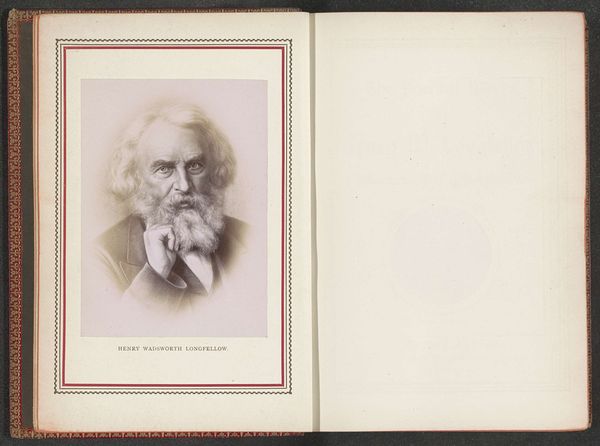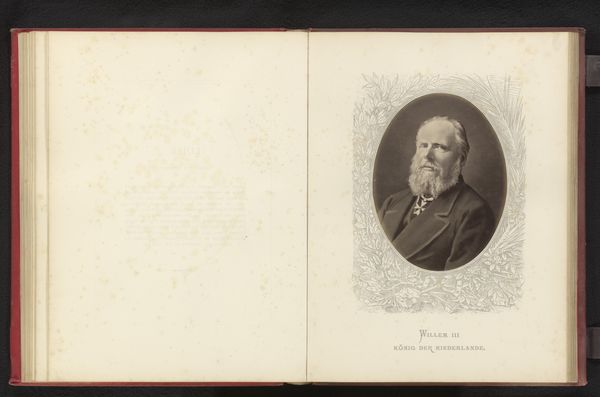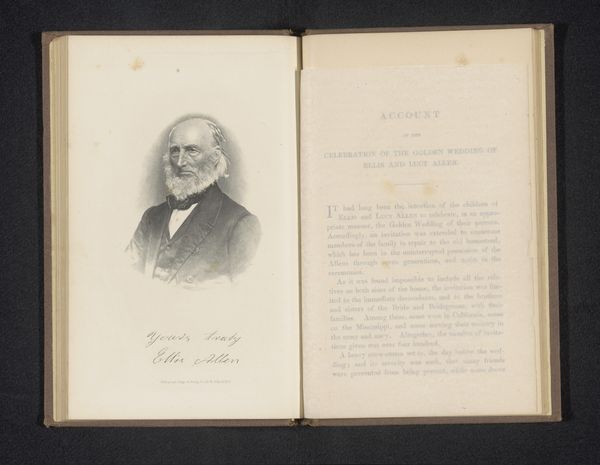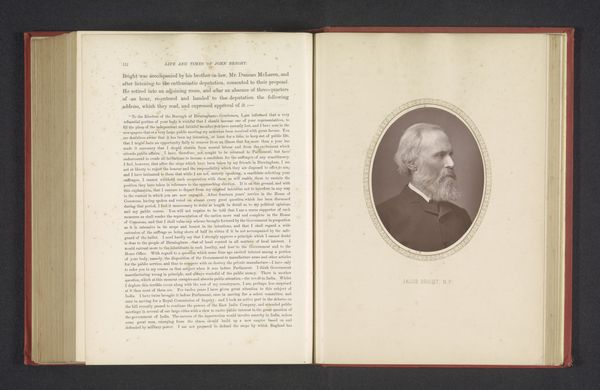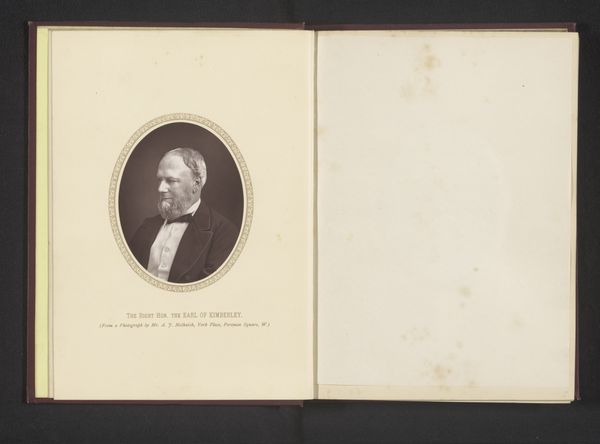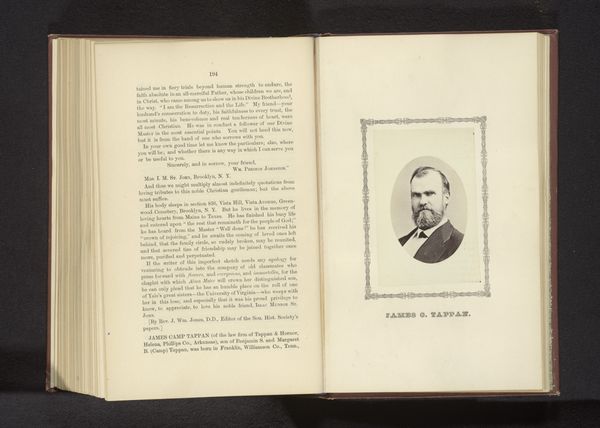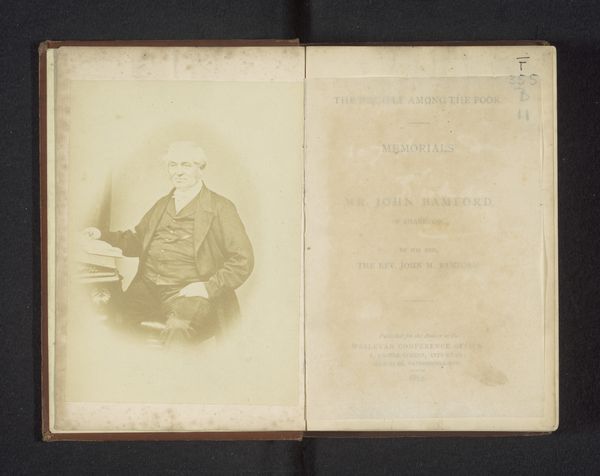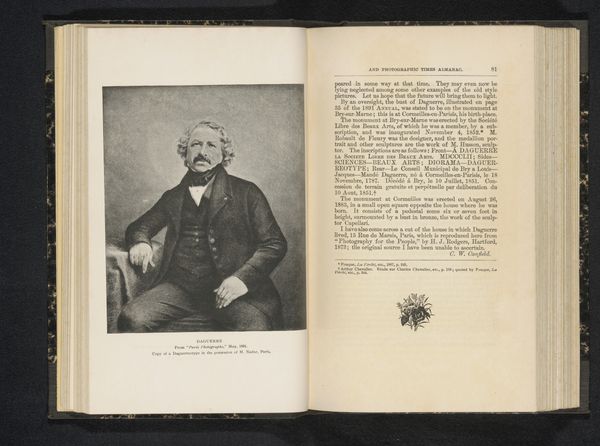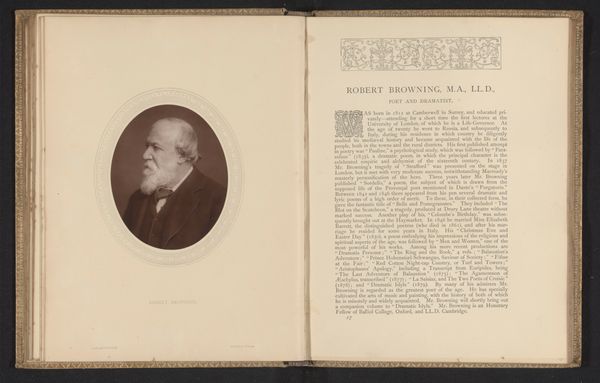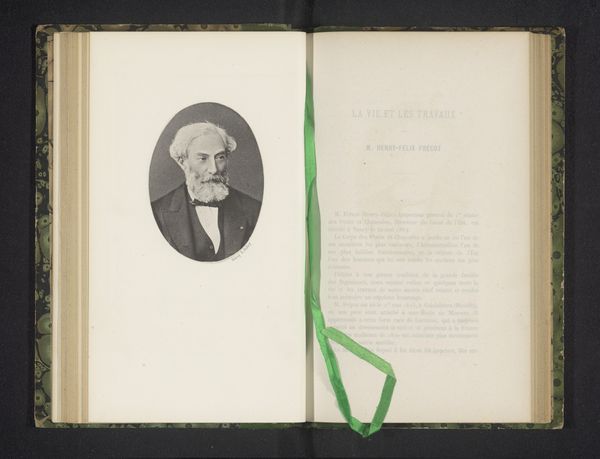
Dimensions: height 201 mm, width 145 mm, thickness 40 mm
Copyright: Rijks Museum: Open Domain
Curator: Well, hello there! Have you seen this cover? It's like stepping into a sepia-toned dream. The work is titled "The Poetical Works of Henry W. Longfellow," published around 1877, and what makes it particularly interesting is the use of photographic illustrations. Editor: Mmm, dreamy is right. It has this very faded, romantic glow. The portrait, especially – Longfellow looks like a kindly wizard lost in thought. A bit sad, perhaps? Or profoundly serene. I’m immediately drawn in by the weight of his gaze. Curator: Absolutely. Payne Jennings did the photographs. It tells us a lot about the popularization of photography in publishing at the time. It shows how images, not just illustrations, began shaping how the public engaged with literature and celebrated literary figures like Longfellow. This copy even name drops the publisher: R. & A. Suttaby of London. Editor: It makes you wonder about the intended audience too. Was it aimed at a wealthier segment, given the expense of photographs at the time? I also see a lovely landscape tucked into the design; it hints at themes of nature and contemplation woven into his poems. That image of Longfellow is so carefully composed, alluding, perhaps, to a poet as a sage, touched by something beyond the everyday. Curator: That is an important question. Books such as these sought to shape perceptions, create enduring cultural legacies and construct public images of poets and intellectuals. This publication, printed at a time when the art market itself was becoming increasingly stratified, uses the emergent technology of photography to further establish Longfellow’s presence as an important cultural figure for consumption. Editor: What’s compelling here is how it connects fame, photography and poetry—all these things converging to create almost a relic, an artifact imbued with significance. It is a tangible symbol of Longfellow’s influence during his time, and one could see him as being fully aware of how this would represent him posthumously. It becomes this visual monument. Curator: Indeed, it offers insight into how reputations were built and sustained through carefully crafted imagery, and reminds us that artistic expression often serves as a vital channel for solidifying social, cultural, and intellectual legacies. Editor: Yes. And I love that in looking at this image of the book cover, we, too, participate in keeping that memory alive, each of us as a reader, listener and viewer!
Comments
No comments
Be the first to comment and join the conversation on the ultimate creative platform.
